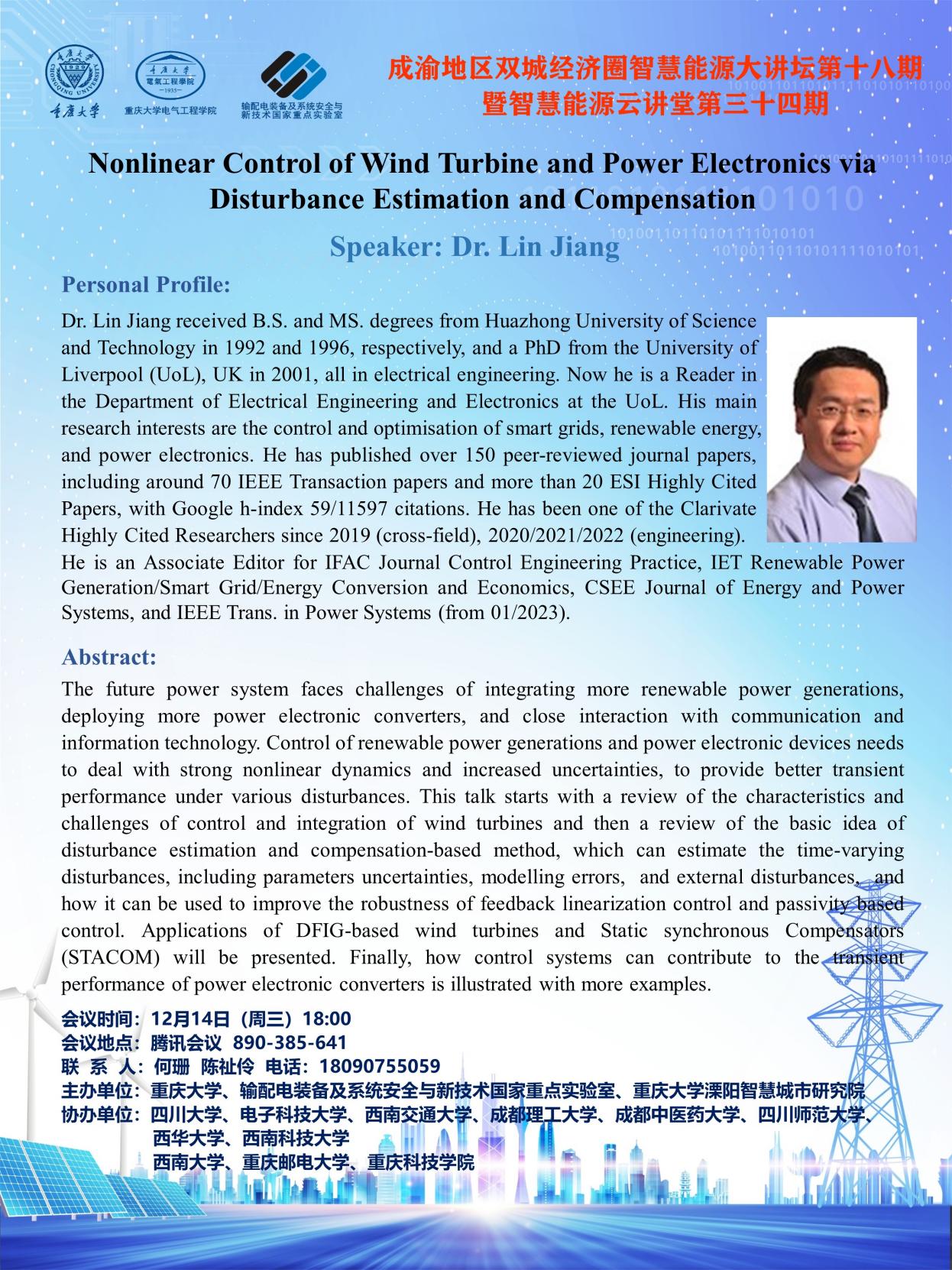报告主题:Nonlinear Control of Wind Turbine and Power Electronics via Disturbance Estimation and Compensation
报 告 人:Dr. Lin Jiang
会议时间:12月14日 (周三) 18:00
会议地点:腾讯会议 890-385-641
主办单位:重庆大学、输配电装备及系统安全与新技术国家重点实验室、重庆大学溧阳智慧城市研究院
协办单位:四川大学、电子科技大学、西南交通大学、成都理工大学、成都中医药大学、四川师范大学、西华大学、西南科技大学、西南大学、重庆邮电大学、重庆科技学院
Personal Profile:
Dr.Lin Jiang received B.S. and MS. degrees from Huazhong University of Science and Technology in 1992 and 1996, respectively, and a PhD from the University of Liverpool (UoL), UK in 2001, all in electrical engineering. Now he is a Reader in the Department of Electrical Engineering and Electronics at the UoL. His main research interests are the control and optimization of smart grids, renewable energy and power electronics. He has published over 150 peer-reviewed journal papers, including around 70 IEEE Transaction papers and more than 20 ESI Highly Cited Papers, with Google h-index 59/11597 citations. He has been one of the Clarivate Highly Cited Researchers since 2019 (cross-field), 2020/2021/2022 (engineering).He is an Associate Editor for IFAC Journal Control Engineering Practice, IET Renewable Power Generation/Smart Grid/Energy Conversion and Economics, CSEE Journal of Energy and Power Systems, and IEEE Trans. in Power Systems (from 01/2023).
Abstract:
The future power system faces challenges of integrating more renewable power generations deploying more power electronic converters, and close interaction with communication and information technology. Control of renewable power generations and power electronic devices needs to deal with strong nonlinear dynamics and increased uncertainties, to provide better transient performance under various disturbances. This talk starts with a review of the characteristics and challenges of control and integration of wind turbines and then a review of the basic idea of disturbance estimation and compensation-based method, which can estimate the time-varying disturbances, including parameters uncertainties, modelling errors, and external disturbances, and how it can be used to improve the robustness of feedback linearization control and passivity based control. Applications of DFIG-based wind turbines and Static synchronous Compensators (STACOM) will be presented. Finally, how control systems can contribute to the transient performance of power electronic converters is illustrated with more examples.



